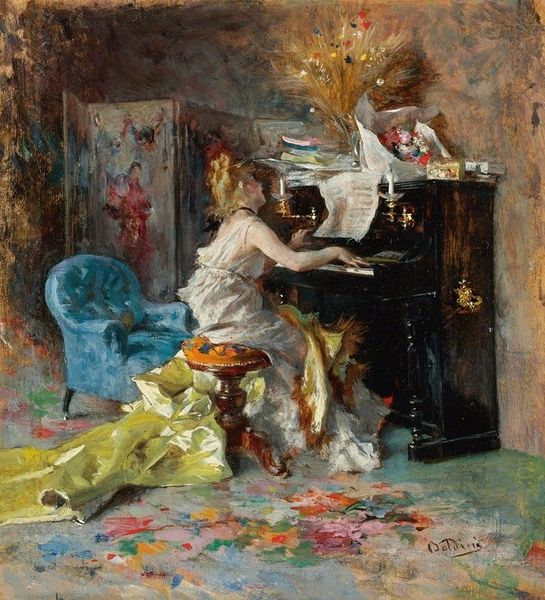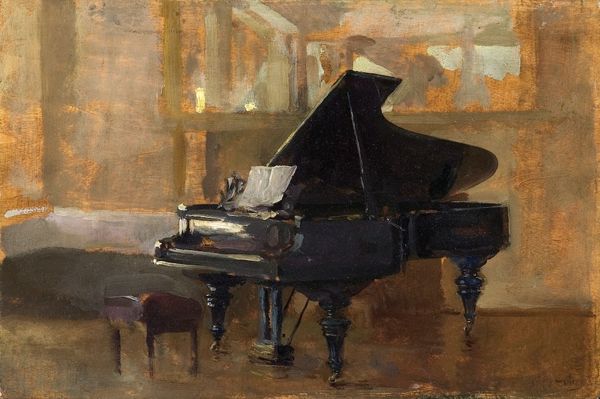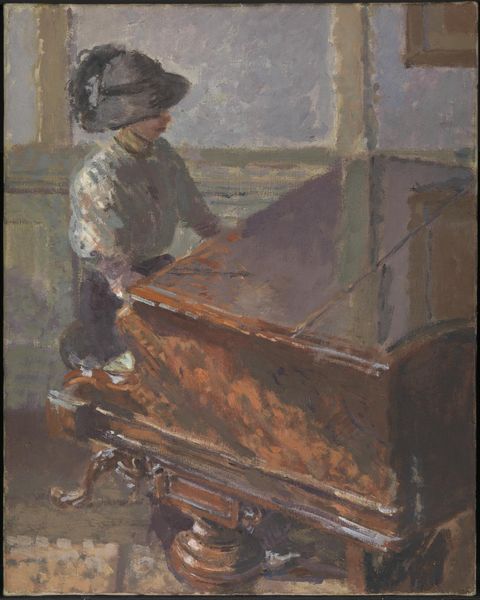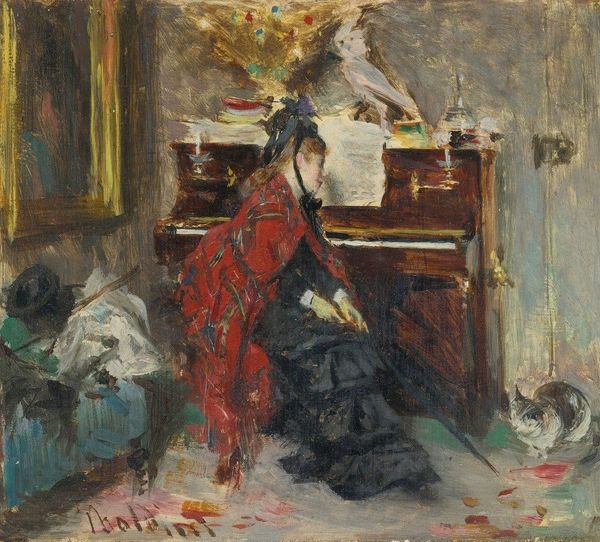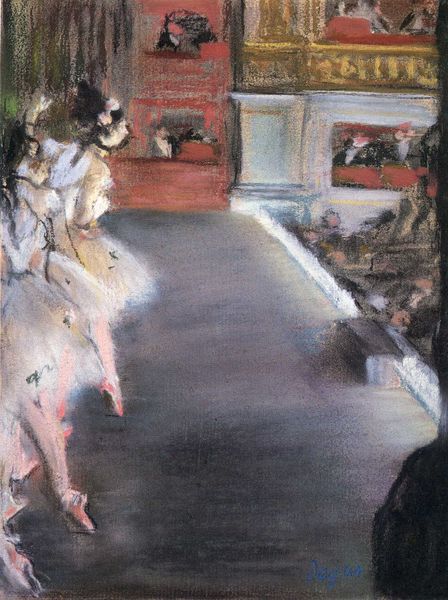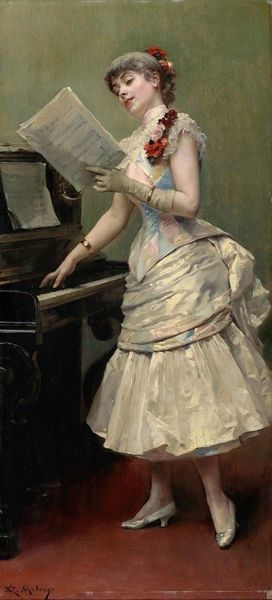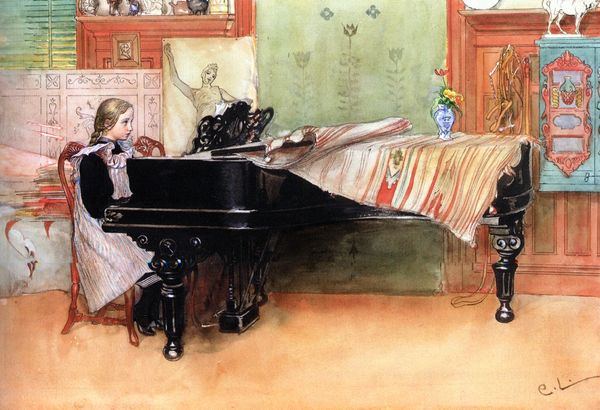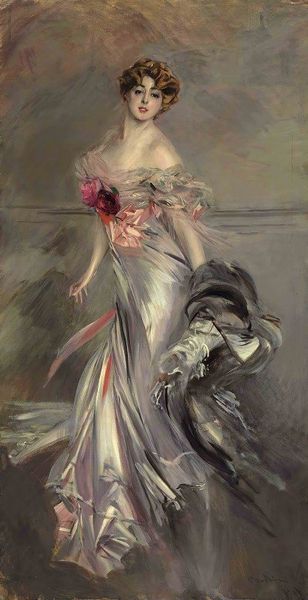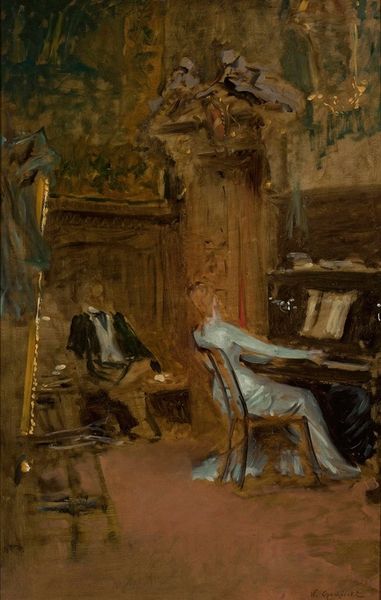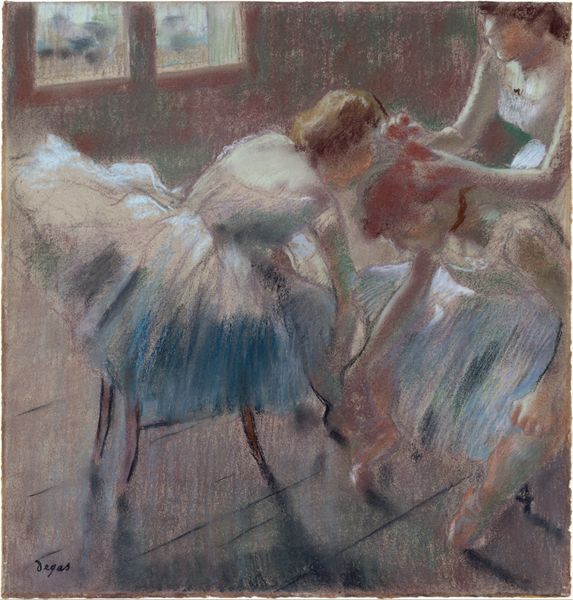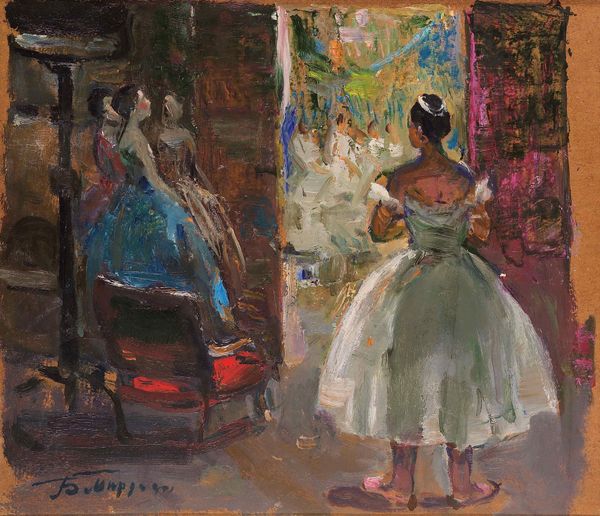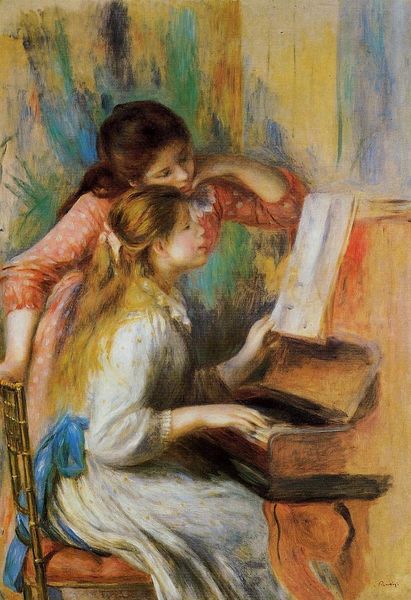
Copyright: Public Domain: Artvee
Editor: Giovanni Boldini's "Recital," painted around 1884, is rendered in oil with a striking impressionistic style. The energy in the brushstrokes makes the scene feel ephemeral, like capturing a fleeting moment. It's quite dreamy. What can you tell me about this work? Curator: "Recital" offers a glimpse into the Belle Époque, a period of optimism, and, frankly, heightened class disparity in Europe. The woman at the piano, and her audience represent this class. It’s also an examination of the art world itself: the performance, the audience, and their relationship. Do you notice how Boldini renders the figures in the background? Editor: Yes! They almost seem to dissolve into the background. Their faces aren't clearly defined at all. Curator: Exactly. What could this technique suggest about the artist's, and perhaps even the patrons’, perspective on the roles women held in society? Consider that while this painting is called ‘Recital’ our attention is on the audience. Editor: Interesting...It seems that their status is more important than the recital itself! In some ways it’s commenting on how recitals like these serve a function of displaying wealth more than experiencing the music. Curator: Precisely. Think about the social rituals and hierarchies operating within these cultural spaces. The painting becomes a document of social dynamics as much as it is a portrait. How might the reception of this work have been different then compared to now? Editor: Wow, I hadn't thought about it that way. It makes me consider the painting's social critique, a snapshot of a gilded society! I appreciate how understanding the social context enriches my appreciation. Curator: And seeing how art acts as a reflection of, and sometimes a challenge to, that context makes it more engaging.
Comments
No comments
Be the first to comment and join the conversation on the ultimate creative platform.
